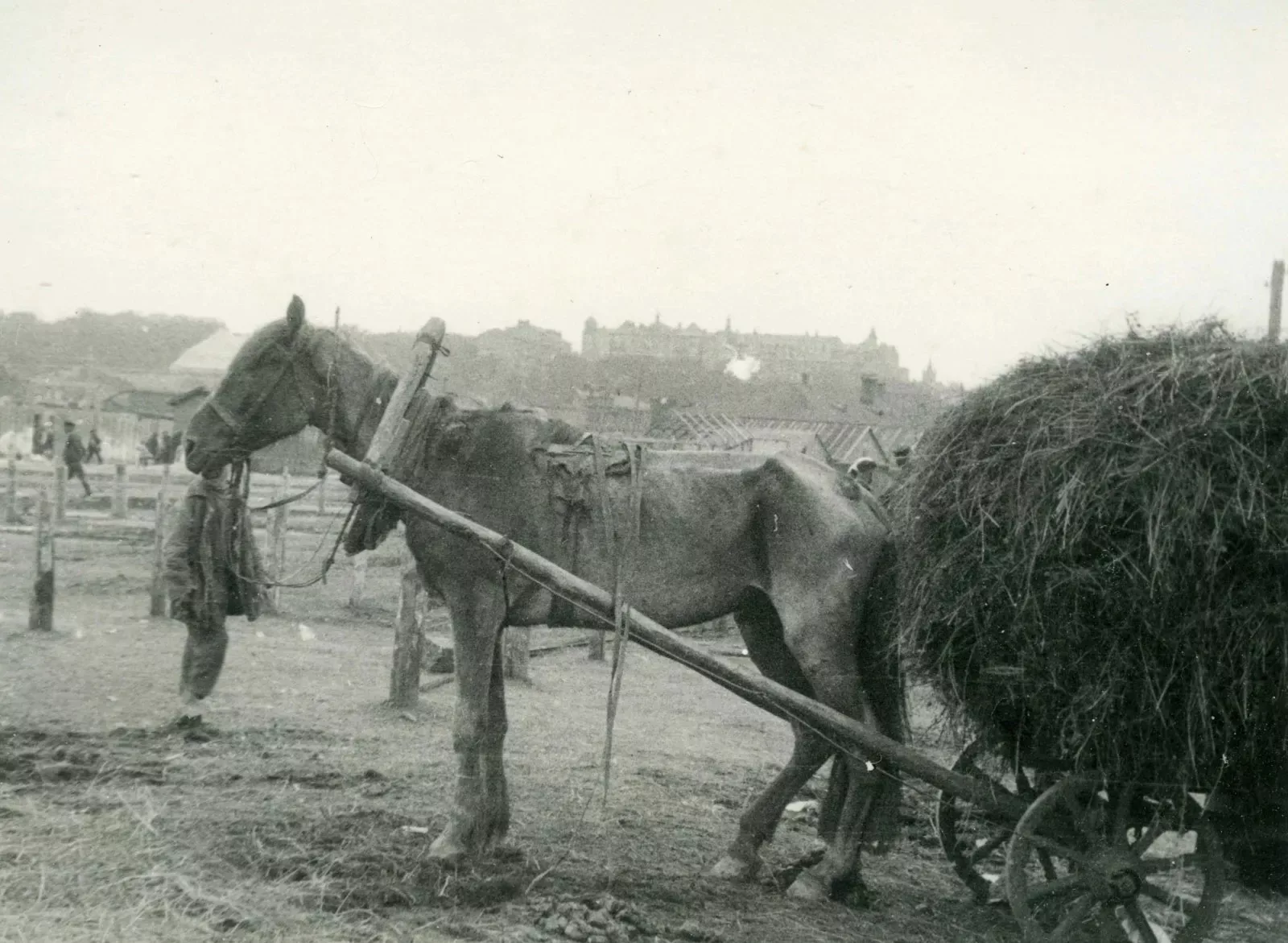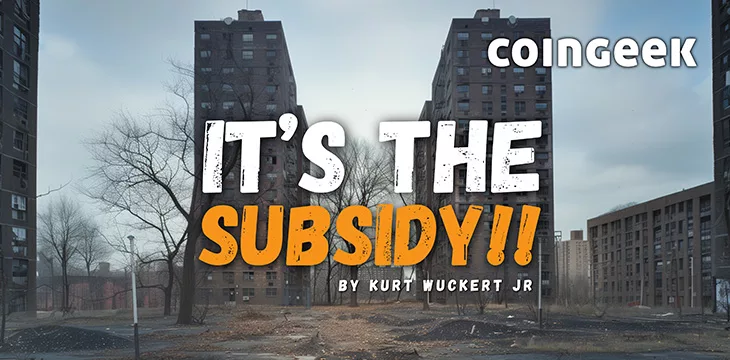|
Getting your Trinity Audio player ready...
|
In the annals of history, few things are as galling as well-intentioned, subsidized government interventions into the marketplace that go catastrophically awry. Cabrini-Green in Chicago and the Soviet Union’s collective farming are prime examples of how grand visions can turn into nightmarish realities. Let’s explore.
Cabrini-Green: From utopia to living hell
Cabrini-Green was conceived as a shining solution to urban poverty, an ambitious project that promised to provide safe and affordable (read: subsidized) housing to Chicago’s low-income families. Constructed in the 1940s and expanded through the 1960s, this public housing initiative was supposed to be a beacon of hope.

By the time I was born in Chicago in the mid-1980s, the high-rise buildings of Cabrini-Green had become towering monuments to the failure of central planning. The news roared nightly of shootings and other violence in an ever-escalating turf war among inner-city gangs. Poorly designed and inadequately maintained, these structures quickly descended into disrepair. By the time units and the overall structures degraded, it had become too great a safety hazard for repairmen to even enter the property due to the extremely high rate of violent crime. The concentration of poverty within these walls bred a recursively growing haven for crime and violence.
The government’s attempt to solve one problem simply created another, more insidious one.
By the 1990s, Cabrini-Green was a national symbol of urban blight. Gang violence, drugs, and systemic neglect turned this housing project into a literal war zone. Eventually, the government resorted to demolishing the complex, tacitly admitting the colossal failure of their grand social experiment. Instead of uplifting residents, Cabrini-Green entrapped them in a grim cycle of poverty and danger, highlighting the folly of subsidies and central planning.
Soviet collective farming: Ideology over reality
The saddest part is that we have seen these sorts of experiments fail already! Half a world away, the Soviet Union’s collective farming policies offered a parallel tale of idealism morphing into catastrophe. In the 1920s and 1930s, Soviet leaders, driven by a utopian vision of socialism, abolished private farms and coerced farmers into vast state-run collectives. The goal was to revolutionize agriculture and ensure food security through centralized control.
The outcome was a tragedy of epic proportions.
Collective farming dismantled traditional agricultural practices, resulting in plummeting productivity and widespread inefficiency. The most horrific consequence was the Holodomor, a man-made famine in Ukraine that claimed millions of lives. The Soviet regime’s ideological fervor blinded them to the practical realities of farming, leading to mass starvation rather than food abundance.

The centralization of agriculture ignored the diverse conditions and local knowledge essential to effective farming. Instead, it imposed a monolithic, bureaucratic structure that stifled innovation and responsiveness. The tragic irony is that a policy designed to feed the populace ended up starving it. The Soviet Union’s collective farming debacle serves as a grim reminder of the dangers inherent in top-down economic planning.
The inescapable failure of central planning
Both Cabrini-Green and Soviet collective farming underscore a fundamental truth: central planning and subsidies are fraught with peril. These policies rest on the flawed premise that a centralized authority can adeptly manage complex social and economic systems. Yet, time and again, such approaches have proven incapable of addressing the intricate realities of human societies.
In Cabrini-Green, the government’s attempt to concentrate resources in a single project led to social isolation and rampant crime. In the Soviet Union, the collectivization of agriculture disrupted local practices and precipitated famine. In both cases, the grand promises of central planning dissolved into grim outcomes, leaving devastation in their wake.
Kurt, is this a Bitcoin article?
Of course it is, dear reader! But thank you for asking!
The block reward subsidy: Bitcoin Core’s central planning pitfalls
BTC Core’s block reward subsidy offers a contemporary case study of the perils inherent in centrally planned economic mechanisms. This subsidy, intended to incentivize miners and secure the network, has inadvertently fostered a culture of complacency and dependency, mirroring the failures seen in Cabrini-Green and Soviet collective farming where cartels have cornered important aspects of the market to the detriment to the system as a whole.
The block reward: Subsidy breeds complacency
My main criticism of Satoshi’s fundamental design of Bitcoin is that the subsidy period is far too long. He couldn’t have known how rapidly the price would increase, but the high price and large subsidy (size and duration) have extended the period of time when laziness and corruption would control the narrative around the value of the network.
The block reward, which grants a fixed number of bitcoins to miners for each block they successfully add to the blockchain, was designed to provide a financial incentive for miners to maintain the network in its infancy. However, this subsidy has led to a troubling dynamic within the mining community and the broader Bitcoin ecosystem.
Mining companies, accustomed to the predictable influx of newly minted bitcoins, have grown lazy and reliant on this easy money. While there are some spillover benefits to the energy sector, ASIC manufacturers, large pools and corrupt (subsidized) factions of the international energy complex have been able to consolidate power that would not have been possible if the block reward schedule was significantly shorter in bitcoin.
Instead of innovating or improving efficiencies, many miners simply focus on accumulating rewards in places where the true cost of energy is pushed onto people who do not benefit from the costs they are subsidizing, allowing the mining sector to profit from circumstances without having to invest in innovating on the underlying technology or the competitive value of the system as a whole.
This behavior is eerily reminiscent of the dependency culture fostered by the Great Society welfare programs. The block reward, like any subsidy, distorts market incentives and creates an environment where players can thrive without contributing to genuine growth or innovation.
The block size limit: Artificial scarcity and economic inequality
Exacerbating the issue is BTC Core’s centrally planned block size limit, which artificially restricts the number of transactions that can be processed in each block. This limitation creates a scarcity of transaction space, driving up fees and making the network prohibitively expensive for smaller, poorer users. This artificial scarcity serves to enrich infrastructure players—those who can afford to pay the high fees—while excluding those who cannot.

The block size limit, much like Soviet collective farming policies, is a top-down imposition that ignores the nuanced needs of the broader user base and writing off the opportunity cost of failing to disrupt the payments and “big data” industries that bitcoin entrepreneurs could have been disrupting over the last fifteen years.
It benefits the few at the expense of the many, fostering inequality and stifling the network’s potential for widespread, inclusive adoption.
Publicly traded mining companies: Disconnected from market realities
Adding another layer of distortion are publicly traded mining companies. These entities often derive significant profits not from their mining activities but from stock valuations, power curtailment agreements and other distorted incentive programs like carbon credit trading. This creates a misleading picture of profitability, as these companies appear successful on balance sheets while often being unprofitable within the true market of the Bitcoin hashing economy.

This phenomenon destabilizes the network by introducing actors who are more focused on financial engineering than on the core principles of Bitcoin, and it stops efficient midsize players from being able to out-compete public companies in the bitcoin space because access to excess (and often subsidized) cashflows aren’t available to private companies in the same ways they are to public ones.
Just as the Soviet Union’s collectivization disrupted local farming practices while enriching the hierarchies and bureaucrats, publicly traded mining companies disrupt the delicate balance of the Bitcoin ecosystem by profiting from derivative systems to the detriment of long-term sustainability within the bitcoin economy.
Grim predictions: The road ahead
The consequences of these issues are manifold and troubling. Here are some potential negative outcomes:
1. Centralization of mining power: The block reward subsidy and block size limit may lead to further centralization of mining power. As smaller, less capitalized miners are pushed out of the market, the network could become dominated by a few large players, undermining the decentralized ethos of Bitcoin. This is already a serious issue as the two biggest players in the space are Antpool and Foundry: a Chinese (read ‘state-run”) conglomerate and a publicly traded U.S. corporation full of financial engineers focused on their proximity to power rather than the disruptive success of bitcoin.
2. Economic inequality: Free and open systems create efficiencies for users and consumers. The high transaction fees of BTC driven by the block size limit will continue to price out smaller users, exacerbating economic inequality within the broader Bitcoin ecosystem. This could lead to decreased adoption among those who need it most, ultimately stunting Bitcoin’s growth as a global, inclusive financial system and only benefitting early adopters and rent-seekers within the BTC hierarchy.
3. Market manipulation: The influence of publicly traded mining companies, with their focus on stock valuations and external agreements, may lead to increased market manipulation. This could result in price volatility and undermine trust in an already off-balance system, making Bitcoin (any variant) less attractive to both new users and institutional investors.
4. Technological stagnation: The reliance on the block reward subsidy has stifled innovation within the mining community and the broader bitcoin economy. Without the pressure to innovate, the technological advancement of Bitcoin’s infrastructure has been slow, leaving it vulnerable to competition from more dynamic and adaptable cryptocurrencies. It has also led to a complicated Bitcoin Civil War and bitcoin’s fundamentals being spread across variants like BTC, BCH and BSV—which confuses users and spreads innovation too thinly to truly disrupt the non-blockchain economy in any meaningful way.
5. Regulatory Backlash: The distorted profitability of mining companies and the exclusion of smaller users have already attracted regulatory scrutiny. Governments have stepped in to address perceived inequities or market manipulations, leading to increased regulation that could continue to stifle the organic growth and innovation of the Bitcoin ecosystem. Failure to disrupt industries while consolidating profits and power makes a case for Bitcoin’s critics to argue that mining is an ESG disaster, and President Biden has recently argued that mining should be stifled by large new taxes to discourage the practice from occurring in the United States.
If Bitcoin was truly adding efficiency and disrupting real industries, it would be much harder for the government to argue that Bitcoin’s activities should be stifled.
Conclusion
The block reward subsidy and centrally planned block size limit illustrate the fundamental flaws of central planning within the Bitcoin ecosystem. These mechanisms create a facade of success while fostering complacency, inequality, and market distortions. As with Cabrini-Green and Soviet collective farming, the road paved with good intentions leads to undesirable outcomes for most participants. To avoid repeating these mistakes, the Bitcoin community must advocate for solutions that empower individuals and embrace the true principles of a free market economy: entrepreneurship and business use-cases which empower the Bitcoin economy as a whole.
As a founder in the mining space, myself, it is difficult to see the way things have played out in Bitcoin’s global infrastructure. BTC mining is more of a player in the energy space, and BSV mining is more of a player in the “big data” economy. Neither are self-sustaining today, and both rely on subsidies and creative, second-order opportunities that are created outside of Bitcoin’s basic economics. For that reason, I challenge us all to do better and be better.
Only then can Bitcoin fulfill its promise as a revolutionary financial system.
Watch: Gorilla Pool provides end to end solution for ASIC mining

 09-03-2025
09-03-2025 





